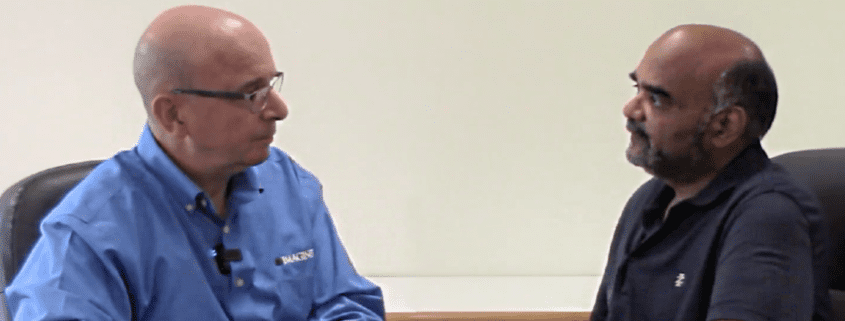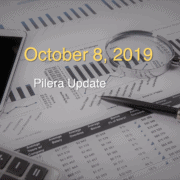Video Interview: How Pilera Helped Imagineers Communicate During a Fire
Pilera Founder & CEO Ashish Patel interviewed Karl Kuegler, Director of Community Association Services, at Imagineers Property Management to learn how they managed the 19-month process of rebuilding after the Stonewood Condominium fire.
Watch Video: Pilera & Imagineers Interview
Transcript
[00:00:00] Ashish Patel: Hello, I’m Ashish Patel, the CEO of Pilera Software. Today we are gonna be talking with Karl Kuegler from Imagineers in Connecticut and how Pilera was useful to them during a fire incident in Stonewood Condominium in Norwalk, Connecticut. Thank you, Karl, for agreeing to meet with me.
Karl Kuegler: Thank you, Ashish, for having me.
[00:00:32] Ashish Patel: Before we discuss the fire incident, I thought it would be useful to talk about Imagineers and your role at Imagineers.
[00:00:38] Karl Kuegler: Thank you, Ashish. I’m the Director of Community Association Services for Imagineers. I’ve been with the company now 29 years. Imagineers is a company that manages common interest communities. We’ve been doing it now for 41 years. We manage just under 200 communities, comprising just under 20,000 homes.
[00:00:59] Ashish Patel: Can you talk about how do you currently use Pilera?
[00:01:02] Karl Kuegler: Yeah. Pilera has been a great tool for us, not only in terms of placing and collecting work orders but it’s also been invaluable to us in communicating with the residents of our communities.
[00:01:14] Ashish Patel: Great. And how were you doing that before Pilera?
[00:01:17] Karl Kuegler: Prior to Pilera, we had another web portal that had, you know, some of the bells and whistles with the ability to post documents and everything like Pilera does. But we felt as though it wasn’t as robust or easy to use in communication, through e-Blast and other means with our homeowners. And, we were really looking for something that not only beefed up our ability to communicate but also is more robust in the placing and tracking of work orders that were being placed by the members of our communities.
[00:01:46] Ashish Patel: Okay. That’s great to hear. Let’s talk about the fire incident at the Stonewood Condominium. Can you describe what happened?
[00:01:53] Karl Kuegler: Sure. About two weeks prior to Christmas, a fire happened at a condominium community, which was comprised of 54 units. All the units were in one building and unfortunately, the fire, which damaged a portion of the building, required a lot of water to be put on the building. And in the end, all 54 units had to be rebuilt, either gutted and rebuilt, from the studs out or had collapsed and had to be rebuilt as a direct result of the flames of the fire. So all 54 units were displaced in the end for 19 months.
[00:02:28] Ashish Patel: Wow. How did you find out about the fire?
[00:02:31] Karl Kuegler: We received a phone call. We started receiving phone calls through our office, in our staff. And I know our lead person in our branch office reached out to me following protocols that we have, to let me know that we had a major fire in one of our communities.
[00:02:46] Ashish Patel: Can you describe how you used Pilera during the fire incident and in the few days afterward?
[00:02:50] Karl Kuegler: The night of the fire, we were able to meet with homeowners and to be able to collect and compare the information that we had in Pilera for email addresses and confirm it with each individual homeowner. And we were able to that night, then update their email address. Had it changed or there was an additional individual that wanted to be added, we were able to do that within Pilera and then that evening to be able to send a message.
We ended up doing it from the comfort of my home instead of the scene, but we could have just as easily done it from the scene of the fire to be able to communicate through Pilera the following morning. We made sure by going into Pilera that the residents were receiving the message, and Pilera has great functionality, which enables you to go in and look at an announcement that went out and be able to tell if the email communication was received, if they opened it, or if they clicked on content. And that was invaluable. So if we had a couple of homeowners or residents that were not receiving the message, we were able to reach out to them through other means, by phone, to be able to make sure that we had the right information for them.
In the days that followed, there was a lot of information that had to go out. And what we didn’t want to do is inundate them with one big long message, with multiple topics in it. So I remember that day directly after the fire, we had four individual messages that went out in Pilera. There were very pointed messages that dealt with a particular topic, and one of the great features of Pilera is the ability to send out a document, and that was invaluable to us because there were certain portions of the governing documents pertaining to insurance or other documents that individual homeowners needed to receive that they could then share with their insurance agent or their attorney to be able to help them in those days, that followed the fire and coping with and responding to the items that they needed to handle themselves.
[00:04:43] Ashish Patel: Can you walk us through the community’s recovery and rebuilding process?
[00:04:46] Karl Kuegler: Yes, and it was a long, drawn-out process. This was a $16 million claim. Both elevators in the building had to be replaced. The entire building had to be gutted or rebuilt. So a lot went into this and it was a long period of time where the homeowners were not able to go into the building themselves due to safety and legal concerns. So communication with the homeowners was critical.
And at least monthly we would send out an update on what was happening in the building. We included photographs, but one of the other things that we did was we would give virtual tours where we would videotape a tour of the inside of the building to give the homeowners a first-hand view of what was going on in the building, something that they couldn’t see by driving down the street where the community was located. And what we would do is provide the link to the video within our Pilera message, and then homeowners were able to go there and see it. But it was also critical to us as we communicated with homeowners about their selection of interior finishes, working with the interior designer, and making sure that other documents that needed to be completed as part of this process were being provided to them. And they knew what they needed to do to communicate with our staff to be able to help them and help with the rebuilding.
[00:06:10] Ashish Patel: How important do you think Pilera was in your company’s response in dealing with the situation?
[00:06:14] Karl Kuegler: It was very important, and it was a critical part of our response to the community. Had we not had Pilera, we would’ve been at a real disadvantage.
We would’ve been forced to mail out documents or create a distribution list, and hope that we could send out an email without too many recipients in the email. And the worry about bounce back emails or emails constantly changing and being able to or having to update that distribution list constantly knowing that Pilera, whenever a homeowner’s email address changed that it automatically entered that email address into the distribution list was critical to us. There was so much going on. We could not spend time worrying about that. So it was critical to us.
The fire when it first started, there were a lot of angry homeowners disappointed that this fire had occurred. It was a cigarette butt that had caused a fire, so there was a lot of anger that they were displaced, that they lost their home over something as foolish as an improperly disposed of cigarette. But through those 19 months and our ability to communicate and provide information to the homeowners, we ended that process with a community that was broken into a community 19 months later, that was cohesive again and back together, and we survived. And the association survived without a lawsuit. Everybody was satisfied and pleased and looking forward to be part of their home, and very few people left the community. During that 19 months, only a handful of units sold during that period of time. Most people truly, genuinely wanted to return to their homes and Pilera played a big part in our ability to communicate and provide the homeowners with the information that they needed during that difficult time.
[00:08:14] Ashish Patel: I know for this community you did not use texting and calls, but I believe that since then you started to use over texting and calling feature as well?
[00:08:21] Karl Kuegler: Yes we do. We do have some communities that utilized the texting and calling feature, and they are equally important in how those communities communicate with their residents, especially when the timeliness of everything is so critically important. And the community that had the fire was a diverse community. We did have a couple of residents that had different primary first languages so having that available to those homeowners, I’m sure was important.
[00:08:51] Ashish Patel: Can you talk a little bit more about how you use Pilera overall now since that incident?
[00:08:58] Karl Kuegler: Pilera is so important to our day-to-day operation and how we communicate and service our clients. The ability to place a work order online. The ability for us to be able to give updates and messages on work orders is critically important and provides that update to the homeowner without any additional effort from our staff. We generate work order reports for our printed board packages that are not so often printed anymore, but PDF documents, where we provide an open and closed work order going back to the time the last board packet was created. And it’s extremely important for our board members to be able to see not only what is open for work orders, but also what’s been completed since we last met with them.
[00:09:50] Ashish Patel: Can you talk a little bit about what happens to a work order at Imagineers once the resident opens it?
[00:09:56] Karl Kuegler: Yeah, I’d be happy to. And one of the things that we really like about Pilera is the ability within a community to have vendors listed that serve that particular community. So for example, placing a work order for a roof leak, the manager or the property assistant can simply go to the list and assign it to the roofing contractor that serves that particular community and have confidence that by them selecting and saving that work order, that an email will go out to that vendor directly without the need for the staff person to then remember to email and generate a pdf. It’s done seamlessly and effortlessly by assigning that work order.
[00:10:39] Ashish Patel: Would you recommend Pilera?
[00:10:39] Karl Kuegler: Absolutely. I think Pilera brings a lot of value to communities, whether they’re a standalone community, right up to management companies, both large and small. The ability to communicate by email, phone, and texting, is critically important in this day and age where messages need to be and are expected to be received.
[00:11:01] The ability to place, track, look at, and update work orders to a homeowner is a great tool that is expected more and more. The ability to post documents and forms on the portal is critically important because the reality is homeowners are looking for this information, not just between eight to five when our office is open, but in the evening or when they’re thinking about it on the weekends. So to be able to look at those documents or go look at their account history or their account balance. And to be able to make payments is critically important. You know, there are a lot of tools that are out there that are affiliated or part of accounting software packages and all, but we have found that the communication tools that Pilera has, the ease of use. It just keeps us staying with, Pilera as a tool, to able to communicate and serve our client communities.
[00:11:59] Ashish Patel: Thank you Karl for agreeing to meet with me.
[00:12:01] Karl Kuegler: Thank you, Ashish, for having me.
About Pilera
As an established leader in property management communications for over 13 years, Pilera is dedicated to helping communities keep their residents informed through timely and relevant communications. To learn how Pilera can help improve your community outreach, book a personalized demo or request a free trial.











